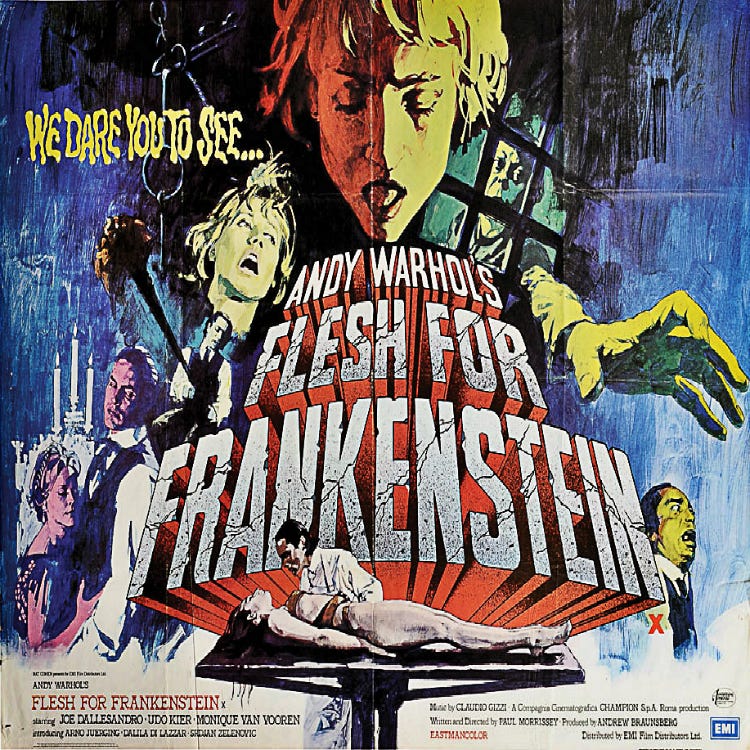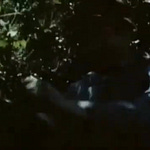If you’ve ever wondered what would happen if Mary Shelley’s Frankenstein was reimagined by a group of deranged art students on a dare, with a dash of Eurotrash sleaze, a heap of entrails, and a script seemingly written by a necrophiliac stand up comic, Paul Morrissey’s Flesh for Frankenstein is the answer you never knew you needed. This is not your grandmother’s Gothic horror unless your grandmother is into incest, surgical sex, and the kind of gore that makes you wish you’d brought a poncho to the cinema.
The plot, such as it is, follows Baron von Frankenstein (Udo Kier, in a performance so gloriously unhinged it makes Klaus Kinski look like a librarian) as he attempts to create a master Serbian race by cobbling together body parts and, in a bold move for science, copulating with his own creations. His wife, who is also his sister (because why not?), is bored, horny, and more interested in the stable boy’s armpits than her husband’s grand designs. Meanwhile, the Baron’s children, who are creepy enough to make the twins from The Shining look like Care Bears, lurk around the castle somewhat menacingly.
Morrissey, best known for his work with Andy Warhol’s Factory, directs with the subtlety of a sledgehammer dipped in viscera. The film's dialogue is a parade of campy, Teutonic absurdity: “To know death, Otto, you have to f*ck life in the gallbladder!” is delivered with such conviction that you almost forget you’re watching a man elbow deep in a corpse’s abdominal cavity. The acting is a buffet of extremes: Udo Kier chews the scenery (and occasionally the props), Joe Dallesandro delivers his lines as if he’s wandered in from a Times Square peep show, and Monique van Vooren vamps her way through the castle like a bored Bond villainess.
But beneath the buckets of blood and the incestuous shenanigans, there’s a razor-sharp (if bloodstained) satirical edge. Morrissey lampoons the decadence of the aristocracy, the commodification of bodies, and the hypocrisy of sexual mores, all while dangling intestines at the audience. The film’s excesses are so gleeful and so deliberate that you can't help but laugh, even as you wince. It’s a Grand Guignol farce that knows exactly how ridiculous it is and dares you to look away.
Naturally, critics at the time were divided: some saw it as a “coy binge in degradation,” others as a “ramshackle affair” whose over-the-top performances and dialogue were either a bug or a feature, depending on your tolerance for art house schlock. Today, Flesh for Frankenstein enjoys cult status, its reputation buoyed by its sheer audacity and the fact that, in a world of bland reboots, it remains utterly, gloriously unique.
Ultimately, Flesh for Frankenstein is a film that dares to ask: What if class satire, mad science, and sexual repression could all be stitched together and brought to life with a jolt of camp electricity? The answer, it turns out, is a movie as filthy as it is funny, as clever as crass, and as unforgettable as a severed head flying at your face. Watch it if you dare. And keep your gallbladder close.














Share this post